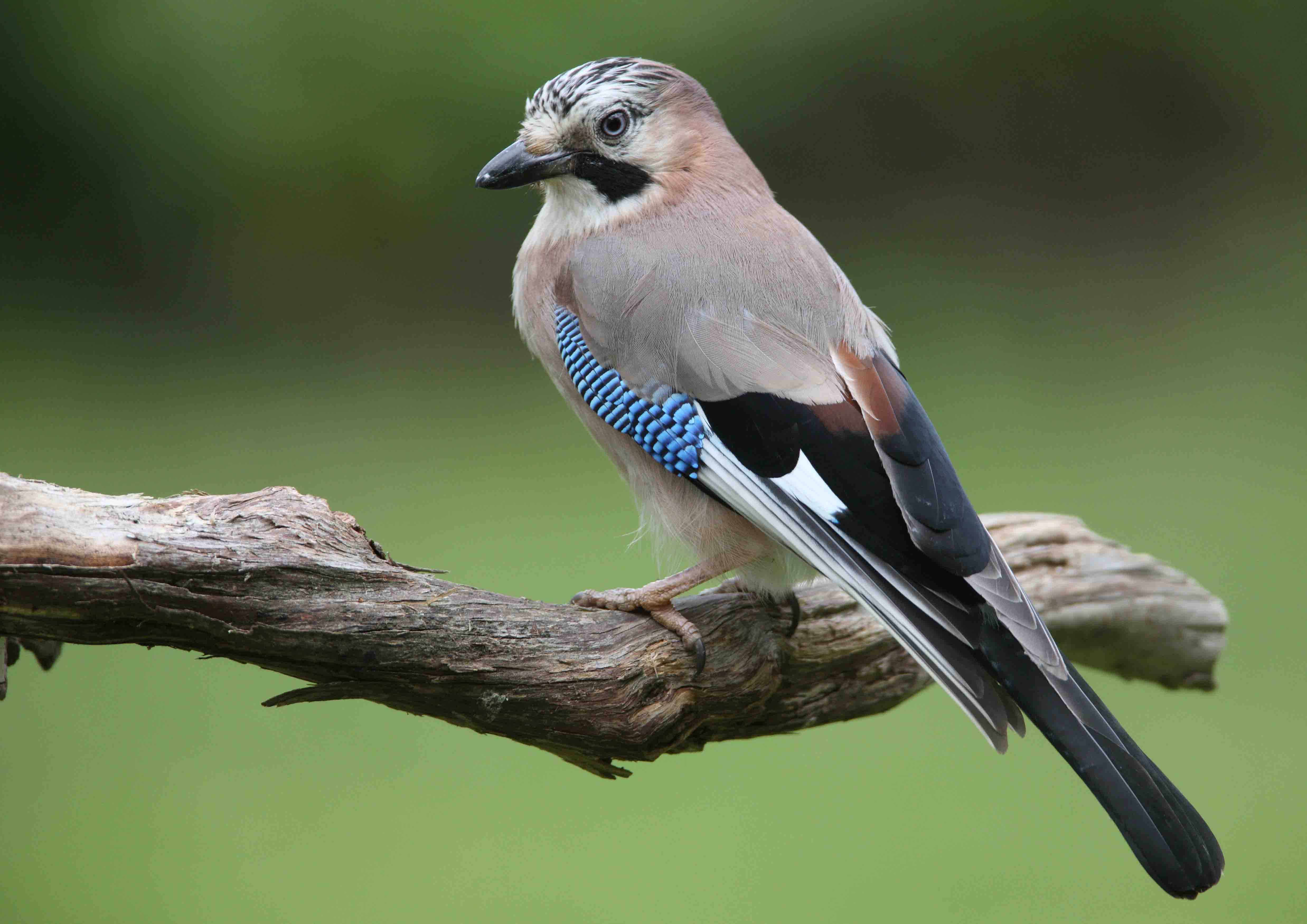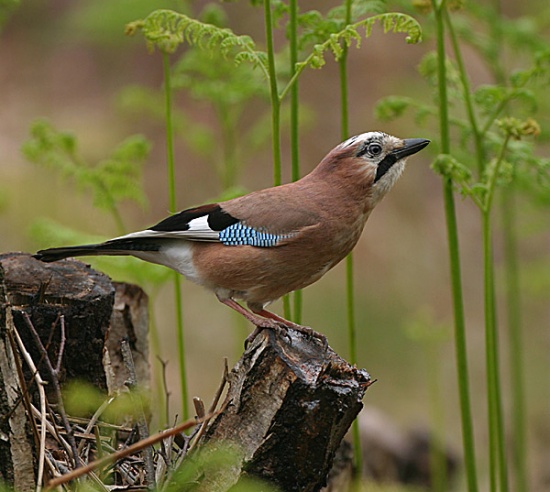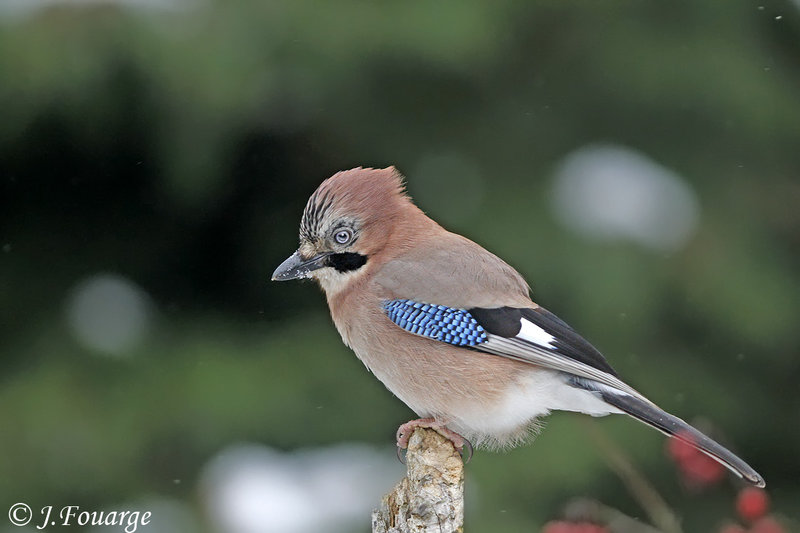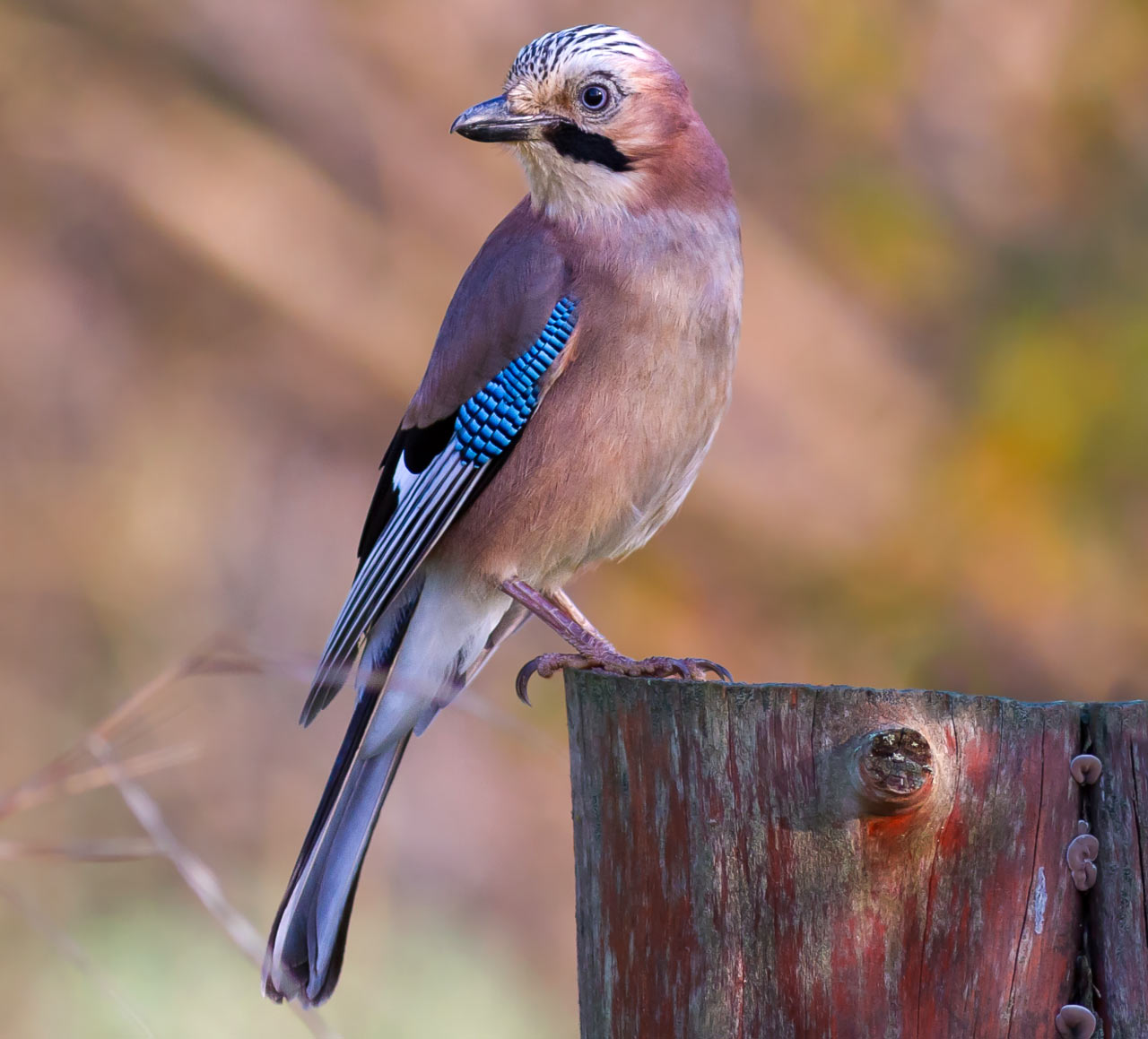
Garrulus glandarius
SUBFAMILY
Corvinae
TAXONOMY
Garrulus glandarius Linnaeus, 1758, Sweden. About 33 subspecies.
OTHER COMMON NAMES
English: Red-crowned jay (in India); French: Geai des chкnes;
German: Eichelhaher; Spanish: Arrendejo Comъn.
PHYSICAL CHARACTERISTICS
12.48–14.04 in (32–36 cm); 4.9–6.55 oz (140–187 g). Subspecies
vary significantly in plumage color and pattern, but generally
this bird has a pinkish brown body, white wing patches, blue
shoulders, and a black tail. The head features a black moustache
and crown feathers that appear ruffled when erect. Bill is dark
brownish horn, and legs and feet are fleshy-brown.
DISTRIBUTION
Most widespread of all jays, found in all but northernmost
parts of Europe, north Africa, Middle East, central and Southeast
Asia.
HABITAT
Both deciduous and coniferous woodland.
BEHAVIOR
Normally shy and solitary. Presence given away by loud,
screeching call.
FEEDING ECOLOGY AND DIET
Eats and stores enormous quantities of acorns. Also feeds on
other seeds, invertebrates, eggs, and nestlings.
REPRODUCTIVE BIOLOGY
Solitary nester, building platform twig nest in fork of tree.
Lays three to seven eggs April through May. Incubation 16–19
days; fledging 18–23 days.
CONSERVATION STATUS
Not threatened. Common to abundant in most of its range.
SIGNIFICANCE TO HUMANS
Thought to be primarily responsible for planting of Old
World oak forests. Individuals bury thousands of acorns in fall
for later consumption.
Other popular Animals
Photo Gallery of - Eurasian jay




 Animalia Life
Animalia Life